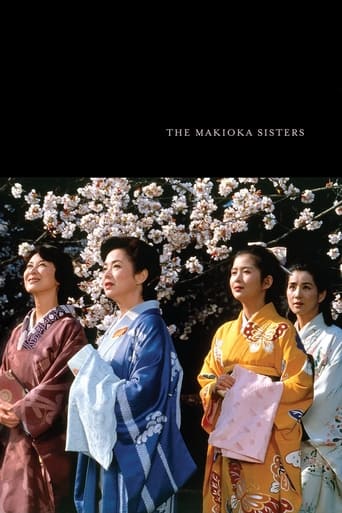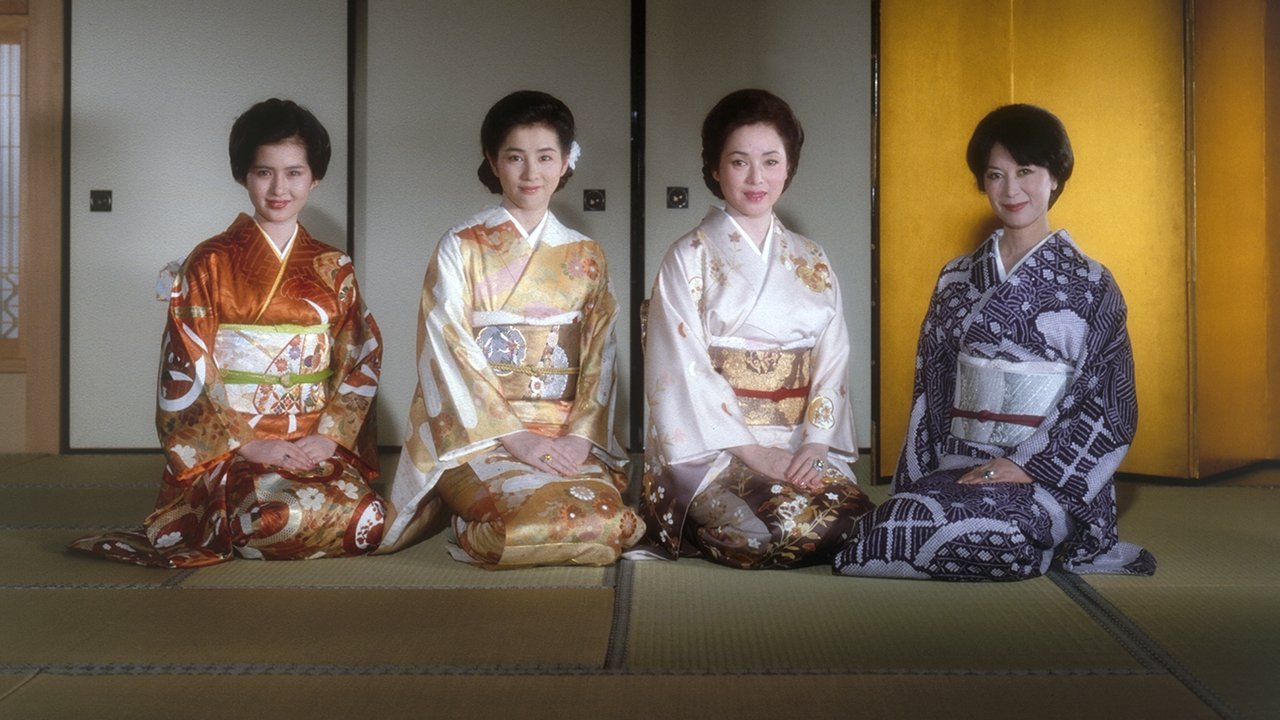tieman64
Kon Ichikawa's "The Makioka Sisters" (aka "A Fine Snowfall") centres on the lives of four upper middle class Japanese sisters during the lead up to the Pacific War. The sisters belong to the Makioka family, a once powerful house which is now witnessing its declining years.The film opens with various misty landscape shots, before settling upon close ups of flower blossoms and petals. Throughout the film, like Ozu, Ichikawa uses ripening fruit and flower buds to suggest impermanence, transience and the passage of time. As Japan awaits change (and bloodshed), the sisters mourn the loss of their parents, fret over their family's finances and battle over tradition. One sister must be wedded to a man before she reaches a certain age, but her moxy and fiery independence (shades of Jane Austen) are at odds with both her biological clock and Japan's customs. Another sister wants to use the family's money to start a doll-making business, but the venture soon gives way to conventional, Western style sewing. All the while, time spirals away, inexorably towards...Much of the film focuses on rituals and customs, most of which are drawn out to the point of parody, or shown to be archaic, laborious and ridiculously inflexible. Holding on to these customs, the eldest sisters believe, will preserve their house's greatness. But these customs, the film shows, are already dead, entombed buds desperately awaiting the new blooms promised by the two youngest, somewhat dissident sisters.The film is stately, melodramatic, lush and colourful, but at times conjures up the spooky lavishness of Kobayashi's "Kwaidan". Ichikawa films the sisters in such a way that they are at times made grotesque and ghostly by ritual. Like John Huston, Ichikawa's filmography is comprised largely of adaptations of highly-regarded literary works. "The Makioka Sisters" was based on a novel by by Junichirô Tanizaki, a major Japanese novelist.8/10 - Worth one viewing.
Michael Neumann
This elegant domestic drama unfortunately offers little to viewers not already attracted to Japanese culture and tradition. The writing is sensitive; the photography is beautiful; but once the plot lines are clear don't expect many surprises.The story involves a pair of formality-bound wives attempting to uphold etiquette by arranging marriages for their more modern (and thus less willing) younger sisters. And because the film is set during the halcyon days just prior to World War Two, it presumably ends with an elegiac parting glance at the passing of a more refined age.Postscript: the all-too brief impressions above were gleaned from a single, incomplete screening during the film's brief theatrical run at the Opera Plaza Cinema complex in San Franscisco, way back in 1986 (three years later, I would be in the same small theater when the Loma Prieta earthquake hit). Now (certainly) older and (possibly) wiser, I would like the chance to re-evaluate it...
weegeeworld
I give this film 10 out of 10 as even after seeing it more than 10 times it still moves me deeply. I was 15 years old when I first saw this movie in the theater in Seattle. I went back to see it again a couple of weeks later. The first 13 minutes during the credits is my favorite scene, filmed in Kyoto in Springtime. Read the book for more background. The Kimono worn by the female actresses are amazing. The late Juzo Itami plays the father. All the dialog is spoken in "Osaka-ben" or Osaka dialect, which has a softer sound than Tokyo dialect. You can also hear some Kyoto-ben too ("gomen-yasu" said by a servant upon entering in the first scene before entering the room). This film brings me to tears it is so beautiful. At the end of the first scene, when the camera pans out to the cherry blossoms outside and the music starts...it is cinematic heaven! I am waiting for this film to come out on DVD.
greenridge10
We saw this beautiful movie several years ago at a Pacific Film Archive showing. We had read the book and found the film followed it faithfully and was gorgeously photographed. We just wish we knew if and when it will ever be made available on DVD or videotape. It was a pleasure to see a film that depicts life in nearly modern Japan with realistic people and locations. We have seen so many "studied" and arty films or medieval Japan that this one has remained a favorite ever since. We were pleased when a beautiful copy of "The Leopard" was released last year and hope that something this classic and beautiful can be made available to viewers.


 AD
AD


